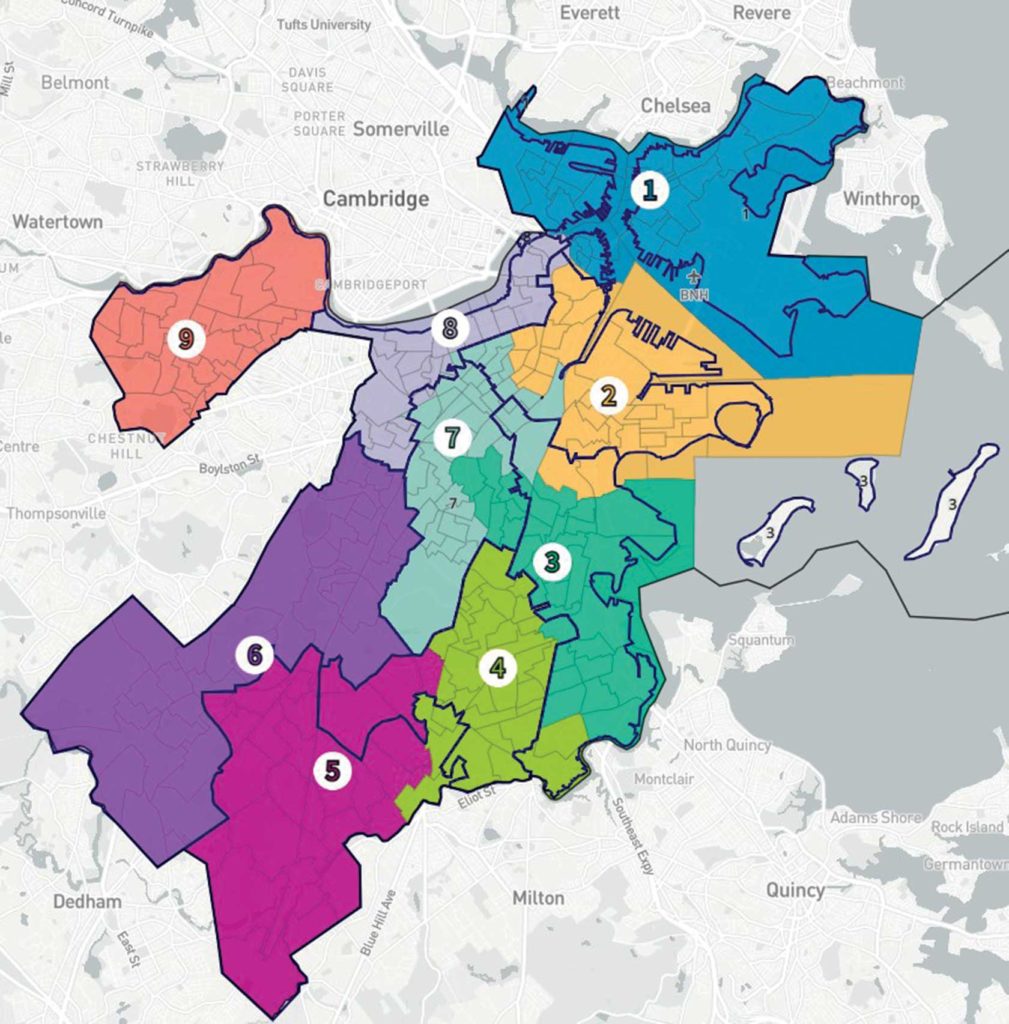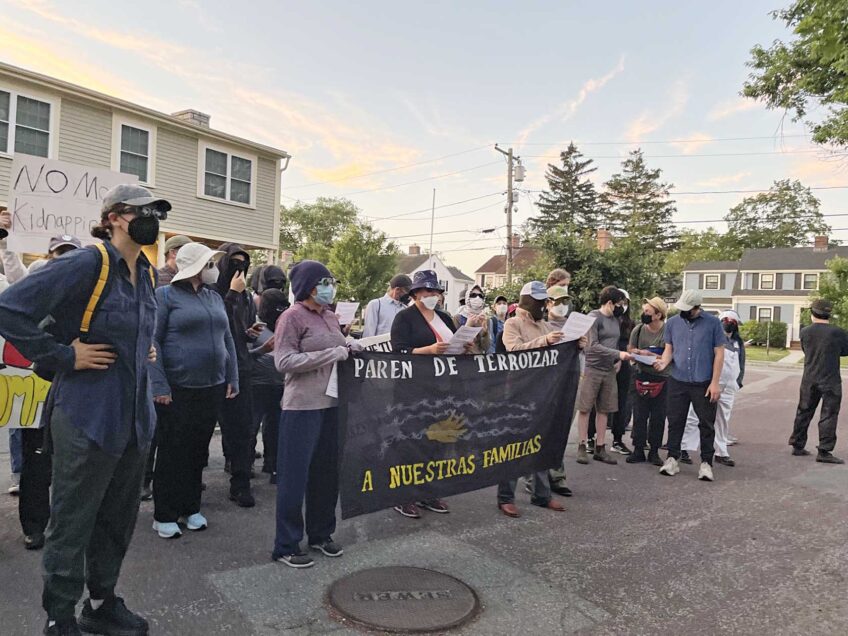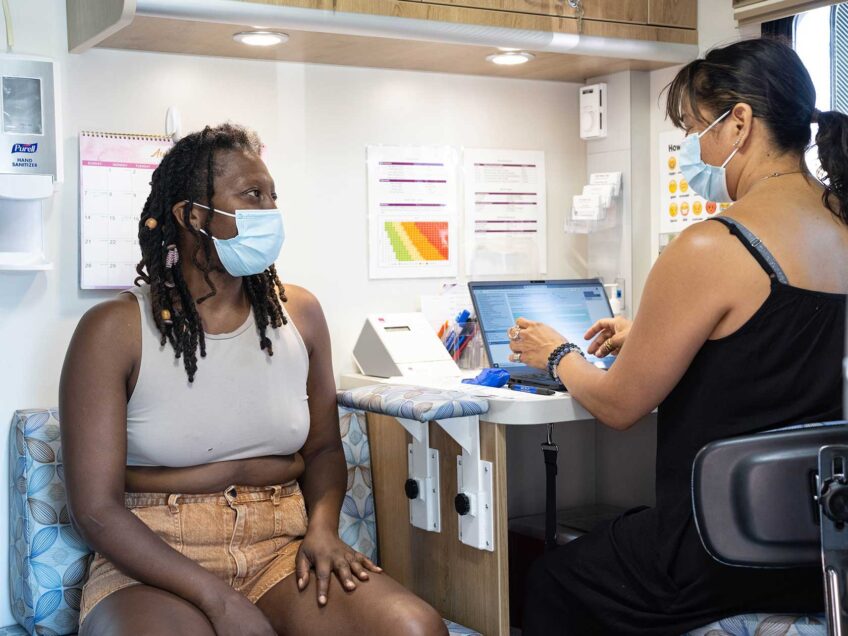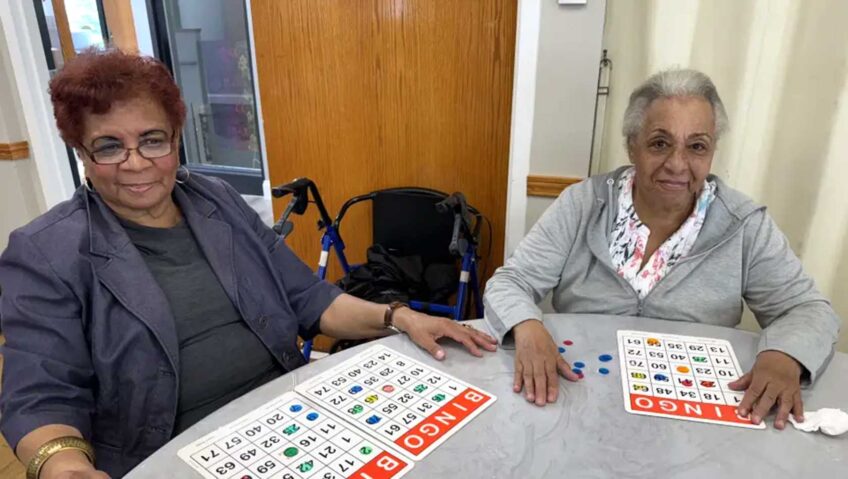Councilors advance redistricting proposal
Arroyo, Fernandes Anderson want neighborhoods kept whole

District 5 City Councilor Ricardo Arroyo and District 7 Councilor Tania Fernandes Anderson have released a redistricting map that they say keeps most of the city’s neighborhoods whole and increases opportunities for Black, Latino and Asian candidates to win seats on the council.
But some members of a coalition of activists working on their own map say the map by Arroyo and Fernandes Anderson would cut Chinatown off from Asian American communities in the South End, thereby diluting that community’s power.
The City Council is required to re-draw the lines of its nine districts after each decennial census to ensure that the population of each district is more or less equal. Because the growth in the city’s population has not occurred evenly, some districts will need to shed precincts while others will need to add precincts.
Nowhere in the city are districts at greater variance with the ideal number of about 75,000 people than in the South Boston-based District 2, represented by City Council President Ed Flynn, and the Dorchester-based District 3, represented by Frank Baker.
Because population has swelled in South Boston with the addition of housing units in the Seaport district and in the portions of Chinatown included in District 2, Flynn now has a surplus of roughly 13,000 people.
In Dorchester, despite a healthy pipeline of major development projects, the population has not grown as quickly as in other neighborhoods. District 3, which stretches from Neponset to South Boston and includes parts of the South End and Lower Roxbury, has a deficit of 6,500 people.
Rather than pushing District 3 further into South Boston, Arroyo and Fernandes Anderson’s plan would consolidate much of the South End precincts into District 3 and include Upham’s Corner in District 7.
Arroyo told the Banner the plan would result in no district varying more than 2.55% from the ideal population count of 75,000.
No proposal is going to do more to keep neighborhoods and communities of interest whole than this one,” he said. “It keeps the South End whole more than any other district map that’s been proposed.”
Arroyo said the map unites the LBGTQ communities in the South End and Dorchester.
“It allows them to exert more influence and have more voice in District 3,” he commented.
Vanessa Snow, policy and organizing director at MassVOTE, said the Drawing Democracy Coalition of which she is a member will likely draw a different map than the one Arroyo and Fernandes Anderson drew.
“We share the same goals as Ricardo and Tania in that we’d like to see more people of color gain political power outside of District 4 and District 7,” she said, citing the Roxbury and Dorchester districts that have been represented by Blacks since the city switched to a district representation system in 1983. “But our coalition would like to see more people of color represented in District 3.”
Chinatown activist Lydia Lowe said the map Arroyo and Fernandes Anderson proposed would cut her neighborhood off from Chinese communities in the Cathedral and Villa Victoria public housing developments.
“We’re trying to make a stronger district for Asian American and Pacific Islander influence,” she said. “This is really weakening the AAPI community.”
Lowe instead suggested that Baker’s district move into South Boston.
“It’s not an easy process,” she said. “District 2 has to lose 13,000 people. We need to look at ways to divide South Boston if we’re looking at creating opportunities for historically disenfranchised communities.”
Fernandes Anderson said the map, the first one officially submitted for debate, is not a final draft.
“This is just a suggestion to bring the conversation about keeping communities intact,” she told the Banner.
A difficult balancing act
When city officials originally decided on nine council districts, the number meant that Dorchester, which now has 120,000 residents, would be split into two districts, but most other neighborhoods would be combined with others to make up one district. In many cases, those pairings have given districts split personalities.
District 6, for instance, pairs predominantly white and traditionally more conservative-voting West Roxbury with Jamaica Plain, a neighborhood known for its progressive politics. District 2, based in South Boston, was paired with Chinatown and parts of the South End. It has always been represented by a South Boston resident. The South End is currently split between District 2, Roxbury-based District 7, and District 3, which currently includes a sliver of Mattapan and precincts in Roxbury.
Through the 1990s, the city’s Black population in Roxbury and Dorchester were concentrated into districts 7 and 4. Thus, there were never more than two people of color on the council until Felix D. Arroyo (Ricardo Arroyo’s father) secured an at-large seat in 2003. From then on, as the city’s white population became more progressive and the number of voters of color increased. Black, Latino and Asian candidates were able to win at-large races and pick up district seats in traditionally white-dominated areas. The council currently has a majority of people of color.
In the current round of redistricting, voting rights activists are seeking to expand opportunities for candidates of color. The Drawing Democracy Coalition’s overarching goal is to make every district with a majority population of people of color truly competitive for candidates of color, according to Beth Huang, Director of the Mass Voter Table.
Huang said District 3, which Baker currently represents, would go from being 38% white to 45% under Arroyo and Fernandes Anderson’s plan.
“It’s a real challenge to find the right balance of people of color in that district,” she said.
Anderson noted that the redistricting committee is open to other proposals.
“This is all open to conversation,” she said. “We’re trying to do the best we can do to keep communities of interest together.”







